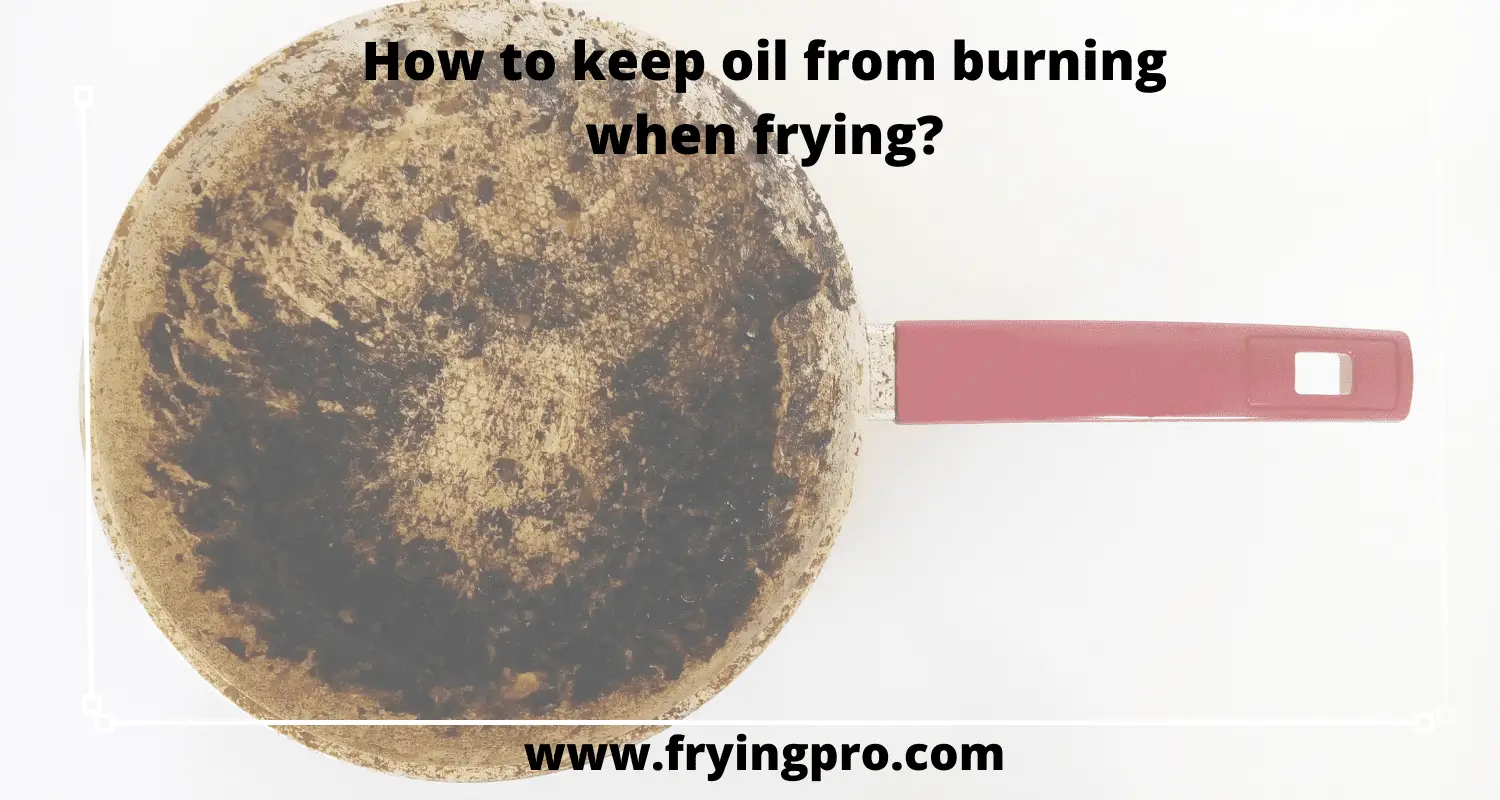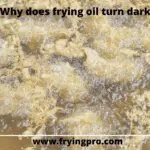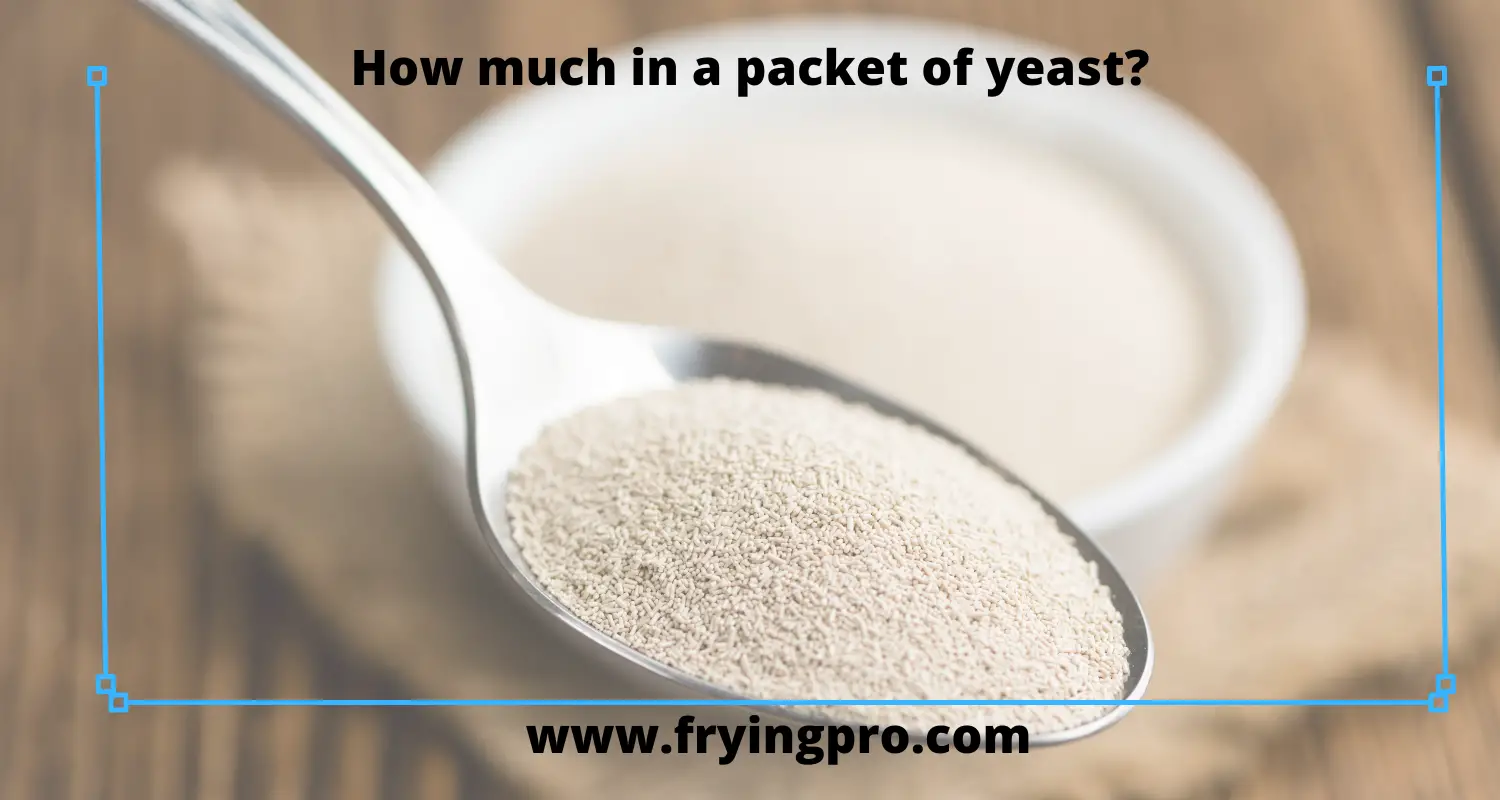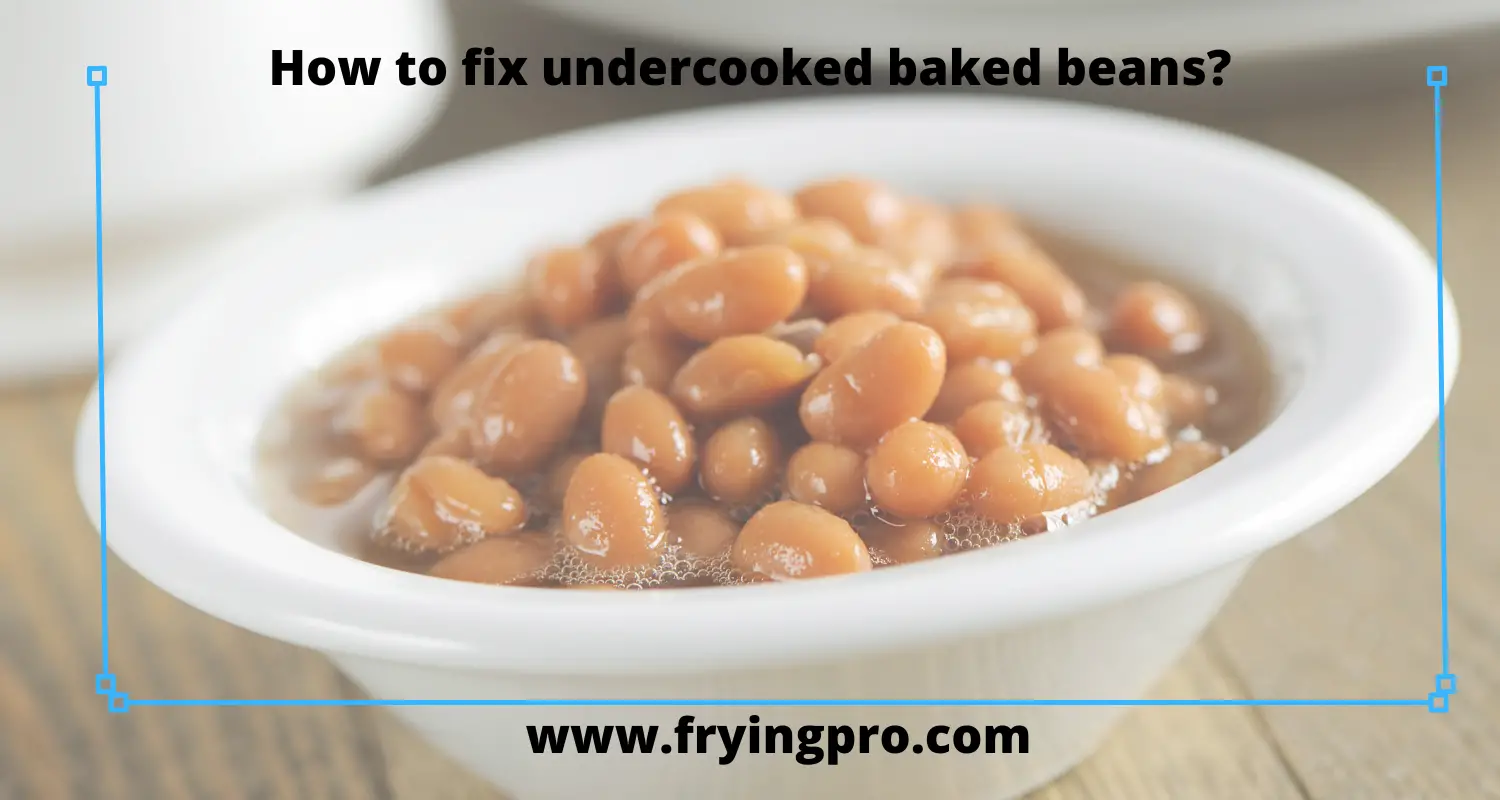Table of Contents
- How to keep oil from burning when frying?
- Tips to keep oil from burning when frying
- Tip 1: Use refined cooking oils that have a high smoke point.
- Tip 2: Use a thermometer to maintain the temperature between 250-350 F.
- Tip 3: Avoid carbon buildup from food particles.
- What should I do if oil burns during frying?
- Why does oil burn when frying?
- How do you keep oil from burning in a stainless steel pan?
- Which oils are more likely to burn when frying?
- How can you tell if the oil has burnt during frying?
- Is it unhealthy to use burnt oil for frying?
- Conclusion
For all those who love to fry, it is a terrible sight to see oil burnt during frying. But how to keep oil from burning when frying? How would you even know if the oil has burnt? And what can you do to keep oil from burning when frying?
Based on my personal experience and science-backed research, I have answered all these questions in this blog post.
How to keep oil from burning when frying?
There are three most efficient ways to keep oil from burning when frying.
- Use refined cooking oil with high smoke points (>400oF).
- Use a thermometer to maintain a temperature between 250-350o F. As the temperature goes above 350-400o F, it burns oil.
- Avoid carbon buildup from food particles. Carbon particles cause rancidity and rapid oil degradation.
| Oil | Smoke point | Suitable cooking temp | Burn risk |
| Butter | 300-350oF | 180-200oF | High |
| Extra virgin olive oil | 410oF | 350oF | Avg. |
| Peanut oil | 440-450oF | 360-390oF | Low |
| Soybean oil | 450-490oF | 370-400oF | Very low |
| Avocado oil | 520-570oF | 400-410 oF | Not known |
Tips to keep oil from burning when frying
Frying is one of the most common ways to cook food. Many fryers are available, from electric to gas and even solar. But the most crucial thing when frying is oil.
If it’s not filtered enough or refined, it will burn quickly and cause smokey smells. The ideal frying oil has a high smoking point and low acidity, as this will make sure the food doesn’t stick to the pan while being fried.
Keeping oil from burning can be tricky, especially if you tend to fry often.
However, you can do some simple things to ensure your fried foods don’t turn greasy fast and give you more time to enjoy them with your family and friends instead of worrying about cleaning up after yourself sooner than you want to!
Tip 1: Use refined cooking oils that have a high smoke point.
Oils with a high smoke point are easy to clean and fry with. These oils are typically made of fewer seed and nut oils refined and filtered by machines.
Always use a sufficient quantity of cooking oil. You need more than a tablespoon when frying, so plan accordingly.
Get rid of any excess oil you might have left over. For example, if your frying pan has too much oil for one dish, cool it down and pour it into an empty jar. Then you can pour the oil back into the pan when needed.
Use a large enough pot for cooking food. If you’re unsure how many cups of oil to use for your recipe, just use 4 cups for 4 or 8 cups for 8 servings. This will make it easier to monitor the amount of cooking oil used every time you fry.
Tip 2: Use a thermometer to maintain the temperature between 250-350 F.
One of the best ways to keep the temperature of your frying oil at the desired levels is by using a thermometer.
When you use a digital thermometer to measure the temperature at which your oil is, you can adjust it according to what you’re frying. This way, you won’t risk over or under-cooking anything.
If you don’t have a thermometer, it’s not too difficult to maintain temperatures between 250-350 F.
Simply add 1/2 tsp of vegetable oil per quart of hot oil and let it sit for a few minutes before adding food. This will reduce smokey smells when the pan starts to smoke and turn into bubbling oil.
Doing this ensures that your fried foods are cooked evenly with less chance of burning and sticking. You also won’t have to worry about cleaning up greasy pans quickly!
Tip 3: Avoid carbon buildup from food particles.
The first step to avoiding a greasy mess is to ensure you’re not accumulating food particles on the bottom of the pan.
If your frying pan has a non-stick coating, clean it with soap and water, or take it outside for a light scrub with soap in warm water. After that, use paper towels or a cloth. If your oil starts bubbling, stop cooking immediately!
The bubbles are caused by the carbon buildup in the oil and can cause large amounts of smoke to happen within seconds if left unattended. You will need to drain the oil and start over before continuing again.
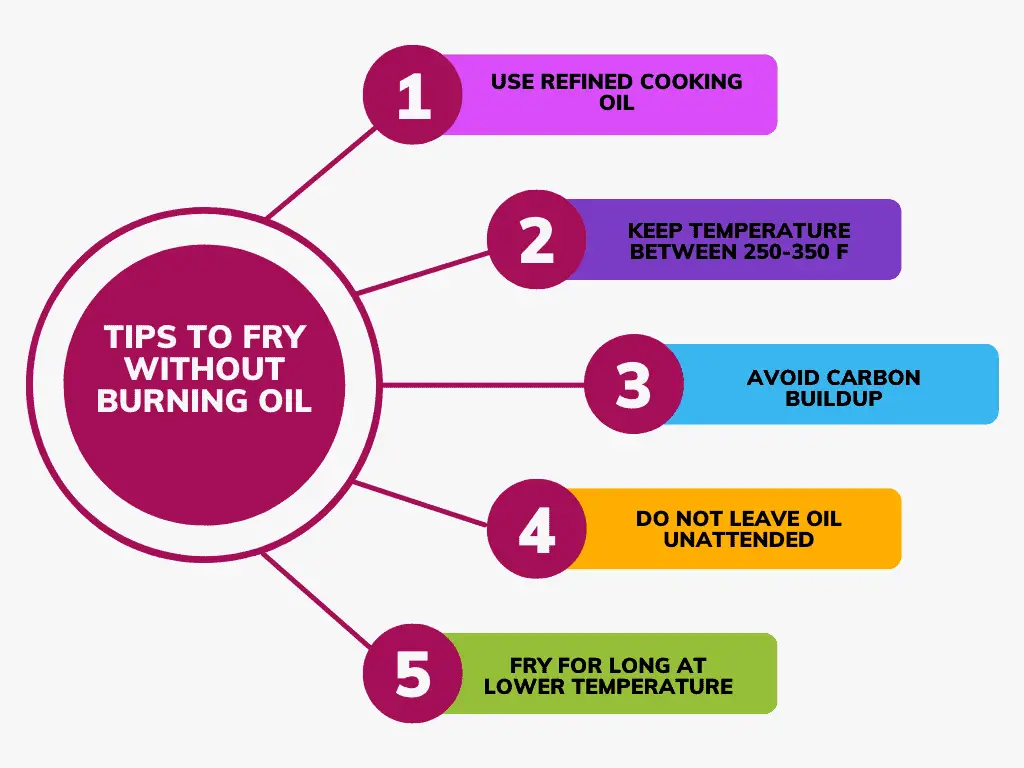
What should I do if oil burns during frying?
If your oil does indeed burn, no worries! You can still save food.
Just pour a little cold water on the oil and use a paper towel to soak up as much of it as possible. Then, let it cool for about 30 minutes before you cook with it again.
Another solution is to place some ice cubes in the fryer with the food that’s going to be cooked. This will ensure your fried food doesn’t stick and keep the oil colder than it would typically be, reducing its ability to burn.
If you want to get even more creative, try adding some flour or cornstarch into cold water and using that instead of ice cubes. There are various ways you can help prevent your frying oil from burning when cooking something!
Why does oil burn when frying?
When oil is heated to a high temperature, it starts to break down. Many chemical reactions occur during this process, leading to smoke and even flames.
If your frying oil isn’t filtered or refined enough, it won’t have the perfect smoking point and will burn quickly when the temperature increases. The smoking point is the temperature at which an oil begins to give smoke without igniting a fire.
The low acidity, in this case, is essential because of the risk of food sticking to the pan’s surface if there are too many acids in your oil. The food won’t stick easily if there aren’t enough acids, giving you more time to enjoy your fried foods with friends and family!
How do you keep oil from burning in a stainless steel pan?
First, ensure only the amount of oil you need for the recipe. If you have too much, it will cause oil to sputter and smoke in your pan, allowing it to burn faster than if you had less.
Second, make sure that the pan is clean. If there are bits of food stuck on the bottom of your pan (because you didn’t clean it), the oil will turn black and give off a nasty smokey smell.
Third, if possible, place a lid on top of your pan. This will help keep heat in so that it doesn’t boil away too quickly and can keep the oil in longer.
Fourth, if you don’t have a lid or don’t want one, try using something with high heat properties like aluminum foil or parchment paper over the top of your frying pan. These materials can absorb excess heat and keep them from escaping into the air.
Finally, minimize splatters by doing small batches simultaneously instead of adding all the ingredients simultaneously. You’ll also be able to see when they’re finished cooking so that you don’t put too much in at once!
Which oils are more likely to burn when frying?
Typically, frying oil will burn if it is high in acidity, so oils like canola with low acidity and a high smoking point are ideal.
Furthermore, you should use a filter or refined oil when frying instead of an unrefined one. Unrefined oils are more likely to burn as they have a higher acidity. The oil won’t get hot enough to properly fry your food.
The last thing you should do before frying is to ensure your pan isn’t too hot and lower the heat once it starts to smoke.
If you let it go too long without adjusting the heat, your food will turn grease and never get cooked!
How can you tell if the oil has burnt during frying?
When the oil starts to burn, it turns black. The oil will also become thicker and stickier, making it harder to remove from the pan.
A few things you can do to tell if your oil has burnt is using a candy or deep fry thermometer. The heating element should be above or below the pan if you use an electric or gas fryer.
If you use a solar fryer, ensure it is set up in direct sunlight. If these tests come back negative, there’s still a chance your frying oil has burnt.
Is it unhealthy to use burnt oil for frying?
In general, you should only use your frying oil for frying and never for cooking. If you have burnt oil, it can make your food taste bad as well as cause health risks.
When frying, it’s essential to maintain the temperature of the oil at a high level. If the temperature is too low, the food will take too long to cook and may become greasy and stick to the pan. You can help this by using a thermometer or making sure that there is enough oil in your container to cover the food.
If you’re unsure how long this particular dish will take to fry, you can always place a cover on top of your pan until it’s done before removing it so as not to leave any residual heat in the pan and potentially burn something else later on.
Conclusion
So, how to keep oil from burning when frying? The best way to avoid oil from burning when frying is to use refined oils that have high smoke points and a thermometer to maintain the frying temperature between 250-350F. With these tips and tricks, you can keep oil from burning and create crispy yet healthy fried foods.

